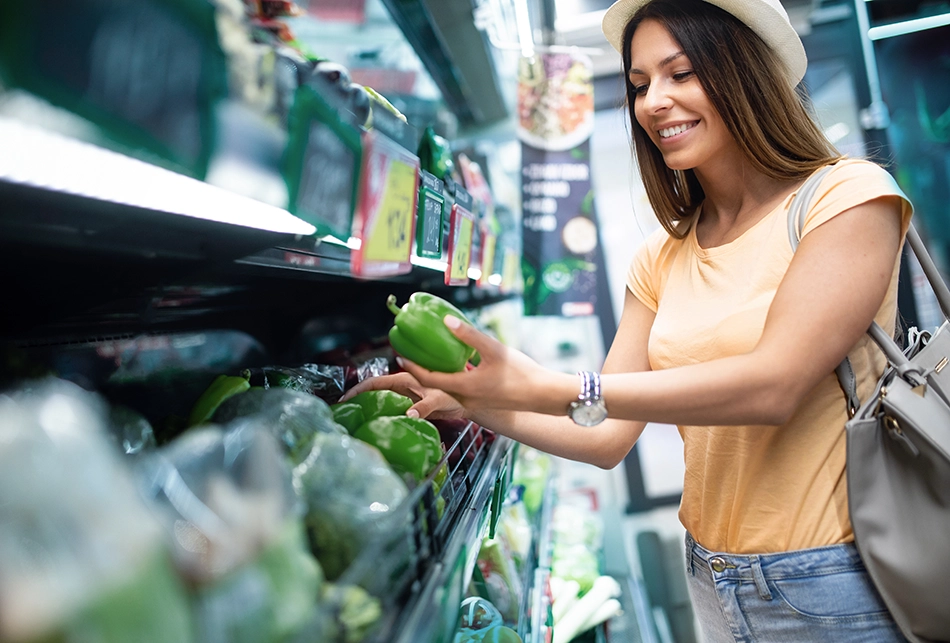Now Reading: Why Smart Retail Stores Are Winning Big in 2025
-
01
Why Smart Retail Stores Are Winning Big in 2025
Why Smart Retail Stores Are Winning Big in 2025

Table of Contents
Retail is not what it used to be. In just a few years, the entire landscape has shifted. From traditional stores to e-commerce giants, and now to AI-powered, personalized experiences, the retail world is undergoing a massive transformation. In 2025, how people shop, where they shop, and what they expect from stores is all being reshaped. For both consumers and businesses, staying ahead of retail trends is more important than ever.
This article takes a deep dive into the key trends, technologies, and strategies that are shaping the future of retail, and what you can expect next.
1. The Rise of Experiential Retail

One of the biggest changes in retail today is the rise of experiential shopping. Customers are no longer satisfied with just walking into a store, picking up a product, and leaving. They now want experiences—something memorable. Brands like Nike, Apple, and Sephora are designing stores that let shoppers test, play, and interact with products in real life.
This shift is especially popular among younger customers. Gen Z and millennials want to connect with brands emotionally. Stores are turning into creative hubs with digital displays, music, scent marketing, and interactive stations. For example, some furniture retailers now offer AR (augmented reality) tools so shoppers can see how a sofa would look in their living room before buying it.
2. AI and Automation Are Powering the New Retail World
Technology is playing a major role in transforming the retail sector. AI (Artificial Intelligence) and machine learning tools are helping businesses understand what their customers want. AI can analyze past shopping behaviors, predict trends, and even create customized product suggestions.
Self-checkout counters, cashier-less stores (like Amazon Go), and robot-assisted stock management are making operations faster and more cost-effective. Automation is also helping brands manage inventory better and reduce waste, especially in sectors like fashion and food retail.
Chatbots and virtual assistants are also becoming common. They guide online shoppers, solve queries instantly, and even recommend products based on browsing history. This 24/7 support improves customer satisfaction and boosts sales.
3. Omnichannel Retail Is the New Normal
In 2025, the line between online and offline shopping is almost invisible. Customers expect a seamless experience whether they’re shopping in a physical store, browsing an app, or scrolling through social media. This is called omnichannel retail, and it’s becoming the standard.
Retailers are integrating websites, mobile apps, social platforms, and stores into one single system. A customer might check a product online, visit a store to try it, and then make the final purchase via a mobile app. Businesses that fail to offer this smooth experience risk losing customers to more connected competitors.
For example, IKEA allows users to check product availability at nearby stores through its app, and then either pick it up or get it delivered. This level of convenience builds customer loyalty.
4. Sustainability Is No Longer Optional
Sustainability is now a major part of the retail industry. Shoppers are more conscious of how their buying habits impact the planet. They prefer brands that focus on eco-friendly packaging, responsible sourcing, and ethical labor practices.
Retailers like Patagonia and The Body Shop are known for their green values, and they’re attracting a loyal customer base. In fashion, slow fashion and second-hand markets are gaining popularity, with platforms like ThredUp and Poshmark seeing rapid growth.
Additionally, retailers are investing in recyclable materials, carbon-neutral shipping, and plastic-free packaging. Going green is no longer just a trend it’s becoming a business necessity.
5. Personalized Shopping Drives Sales
Today’s customers expect a shopping experience that feels personal. Whether it’s a product recommendation, a marketing email, or a loyalty offer, everything should feel tailor-made.
Retailers are using big data to understand customer preferences and deliver personalized content. Online stores remember your past orders and suggest what you might like next. Some fashion websites now offer virtual stylists who help you choose outfits based on your body type and style.
This level of personalization leads to higher engagement and better sales. According to a recent study, 80% of consumers are more likely to buy from a brand that offers a personalized experience.
6. Social Commerce Is Booming
Shopping through social media is a fast-growing part of retail. Platforms like Instagram, Facebook, and TikTok now allow users to shop directly through posts, reels, and live videos.
Influencers play a big role here. Their product reviews and recommendations influence buying decisions, especially among younger users. Brands are investing heavily in short-form video ads, live selling events, and creator partnerships.
Social commerce is making shopping feel more social, fun, and spontaneous. It’s like window shopping with a digital twist, and it’s growing at lightning speed.
7. Small Retailers Are Going Digital
It’s not just big companies that are evolving. Small and local retailers are also turning to digital tools to survive and grow. Many are now offering e-commerce options, online payment gateways, and mobile-based loyalty programs.
Thanks to platforms like Shopify, WhatsApp Business, and Google Business Profiles, even small shops can now compete online. They can target nearby customers with local ads, offer home delivery, and keep in touch through messaging apps.
This digital transformation is helping small businesses stay competitive and offer more value to their communities.
Conclusion: The Future of Retail Is Now

Retail is going through one of its most exciting periods ever. Technology, sustainability, personalization, and experience are reshaping how we shop. For businesses, the message is clear: evolve or fall behind. And for shoppers, it means more choices, better experiences, and smarter services.
Whether you’re a consumer, business owner, or investor, keeping up with retail trends is key to thriving in 2025 and beyond.
Final Takeaway:
Retail is no longer just about selling products. It’s about creating connections, offering convenience, and being part of a customer’s lifestyle. With the right mix of innovation and human touch, the future of retail looks promising and profitable.
Read More:- Shobha Realty Launches Its Most Luxurious Project Yet—Full Details Inside 2025






















